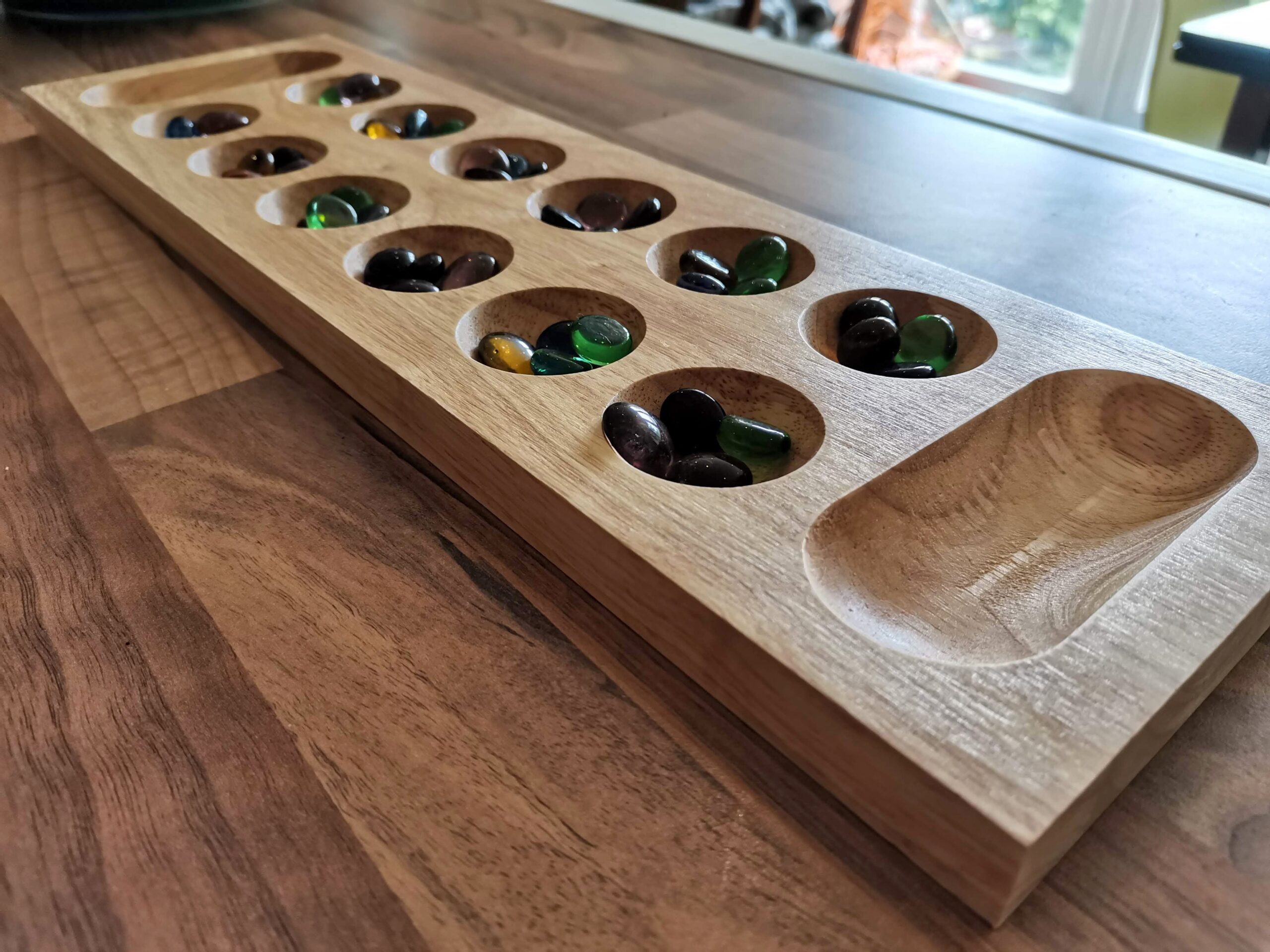Bonfire Review
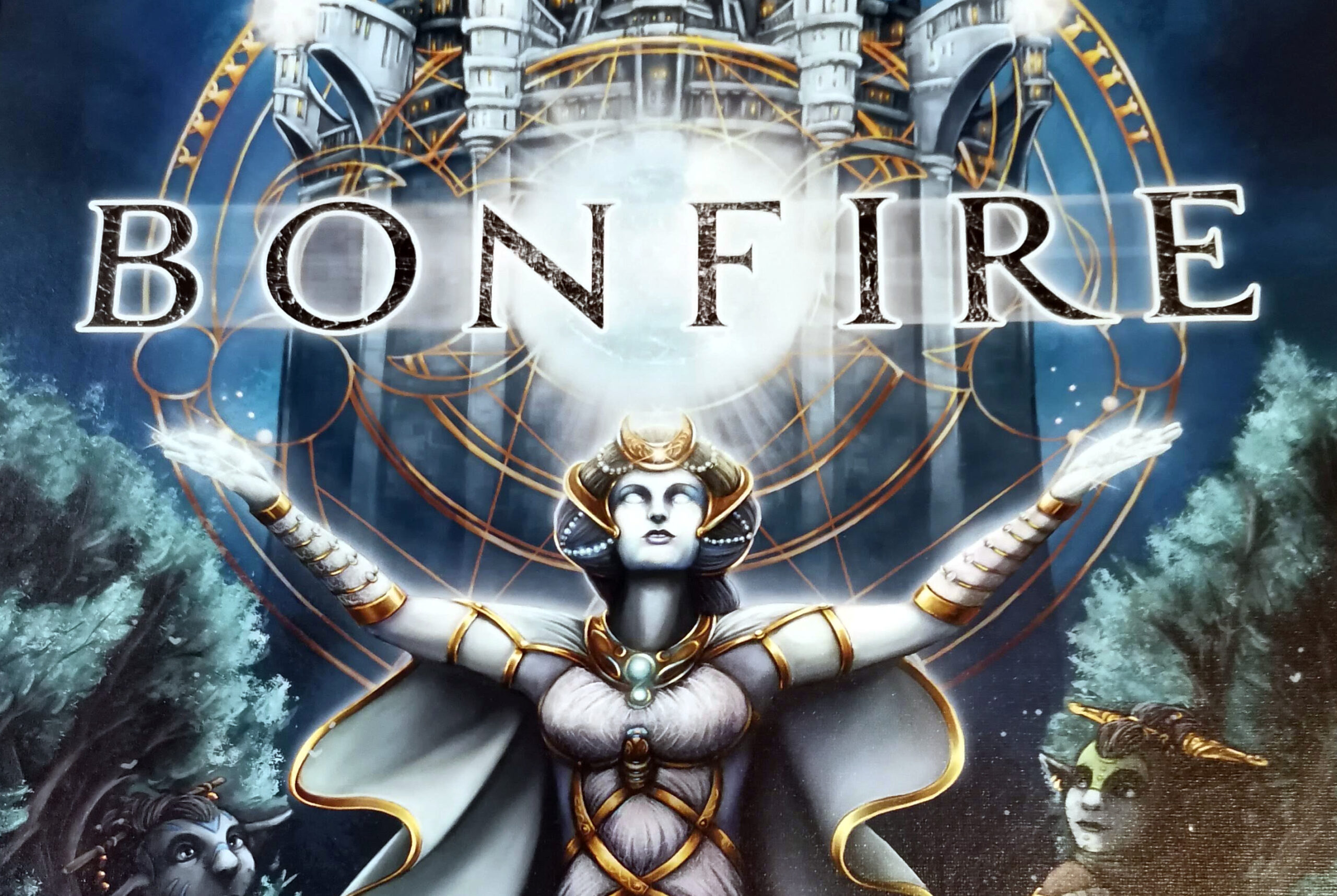
Update: Video Review Added
[yotuwp type=”videos” id=”gN0CtsF3y98″ ]
Does the idea of gnomes, islands, guardians and bonfires get you excited? No? How about shells, fruit, roots and portals? Getting somewhere yet? Hmmm. Okay, how about a lavish new Stefan Feld game, full of mechanisms, strategy and gorgeous artwork? Ahhh, now I’ve got your attention! Let’s have a look at Bonfire, his big new game for 2020.
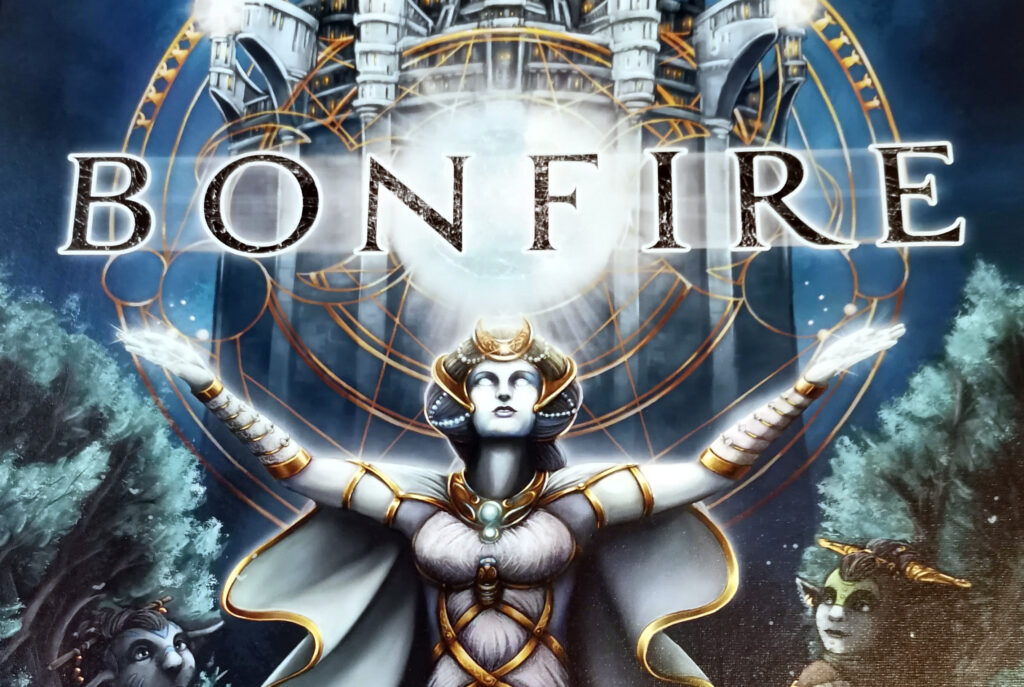
Stefan Feld is an important name for fans of Euro games. He’s the designer we have to thank for some of the most important games to have been produced in the last fifteen years. Trajan, Macao, Bruges, and a little game you might have heard of called The Castles of Burgundy. He’s been a busy boy in 2020, announcing a re-theming of several of his classics for the City Collection, a new ‘Castles of’ game, this time in Tuscany, and the one which really piqued my interest, and the one you’re here to read about – Bonfire.
Bonfire’s backstory isn’t the usual Feld fare. It tells of a world were bonfires brought light to a world of perpetual darkness, created and maintained by the guardians. When the inhabitants exploited them however, the guardians retreated, and the world was once again plunged into inky darkness. Now you, and a group of gnomes aim to bright light back by completing tasks to prove your worth to the guardians, and convince them to return from their islands to re-light the bonfires.
What’s In The Box
The more cynical among us would think back to the likes of The Castles of Burgundy or Notre Dame, and think of beige. There wasn’t much in the way of colour in his older games, and the components and boards could be pretty thin, not much to write home about. Bonfire, however, is a different story.
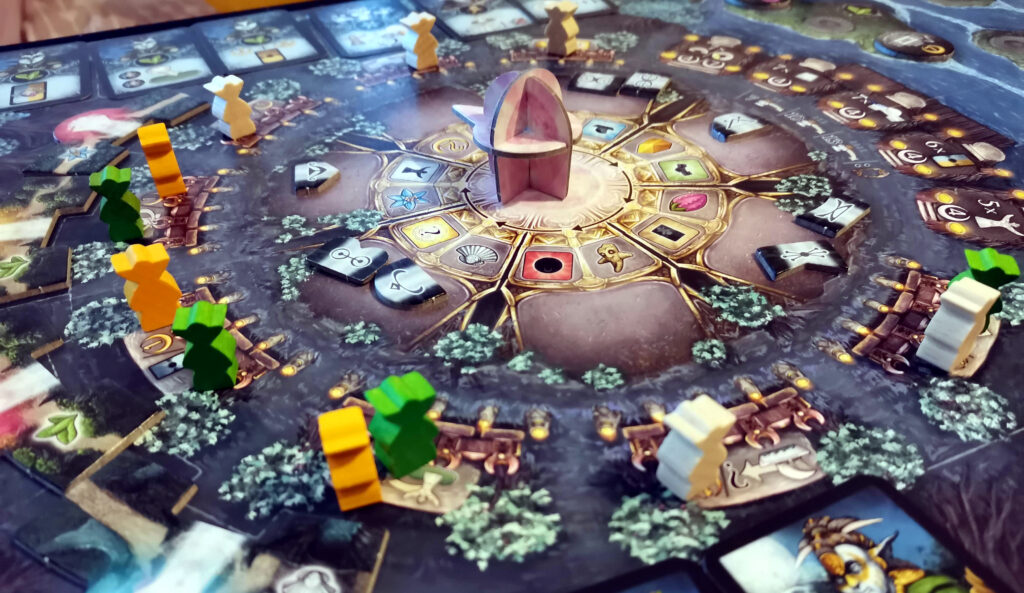
The first thing to notice is the board. It’s covered in rich, detailed artwork, and the back-side of it has a huge version of the illustration of the guardian from the box cover. Instead of cubes for player pieces, there are little gnome meeples, and the resources are custom-cut, brightly painted pieces of wood. Each player has their own player board, and there are a ton of different tokens and tiles in the box; action, fate, task, offering and path tiles. There are wooden guardians and boats, three decks of cards, loads of little portal tiles, and even a 3D bonfire you have to build from three pieces of cardboard.
Considering it’s a smaller box, like the old Alea ones used for the likes of Castles of Burgundy or Macao, there’s a huge amount of stuff in it. The production values are a far cry from those Alea games. Everything feels like it’s going to last a long time. The iconography is really clear throughout, and the rule book is really nicely written. It’s a good thing too, as you’ll need to refer to it quite a lot for the first few games, because there’s a handy appendix at the back telling you exactly what the specialist and elder cards do.
How Does It Play?
Bonfire is a meaty, thinky game, so let’s break it down and explain what’s going on.
The Basics
Players collect and use action tiles, to perform the various actions available. To get action tiles, they take fate tiles from their own area, and place them onto their player boards. In a similar way to the way the games Patchwork and A Feast For Odin work, the fate tiles have to fit onto the players’ boards. You get one action tile for each symbol, but if the fate tile you place has a matching action adjacent, you get two action tiles. Later, if a third matching one touches, you get three.

Spending your action tokens is where the rest of the game is played, but there are a lot of choices available at any one time. You might choose to sail to an island, to trade some of your resources to take a task. The task goes on your player board, and later if you manage to fulfill that task (which ranges from easy to difficult), you can flip it to light a bonfire.
You can rotate the great bonfire and claim two of the three rewards available at each slot. This is often one of the portal tokens, to add to your player board (every type is a different shape, jigsaw-style), and then either a resource or an action tile. Maybe instead you choose to claim one of the cards available: specialists and elders. Specialists usually grant you ongoing bonuses for performing certain actions, and elders are in limited supply, but give you a one-time VP bonus for having numbers of various ‘things’ in your possession.
What Else Can I Do?
I’m glad you asked. You can choose to claim a path tile. Path tiles are added clockwise around your player board, and give the guardians somewhere to move when you choose to trigger a procession. Speaking of which, when you’ve recovered one more guardians from an island, you can trigger a procession. This sees them advance along your path tiles, and either granting bonus resources for the space they stop on, or, if there’s a portal between their path and the board, they can stand next to one of your bonfires, for end game VPs.
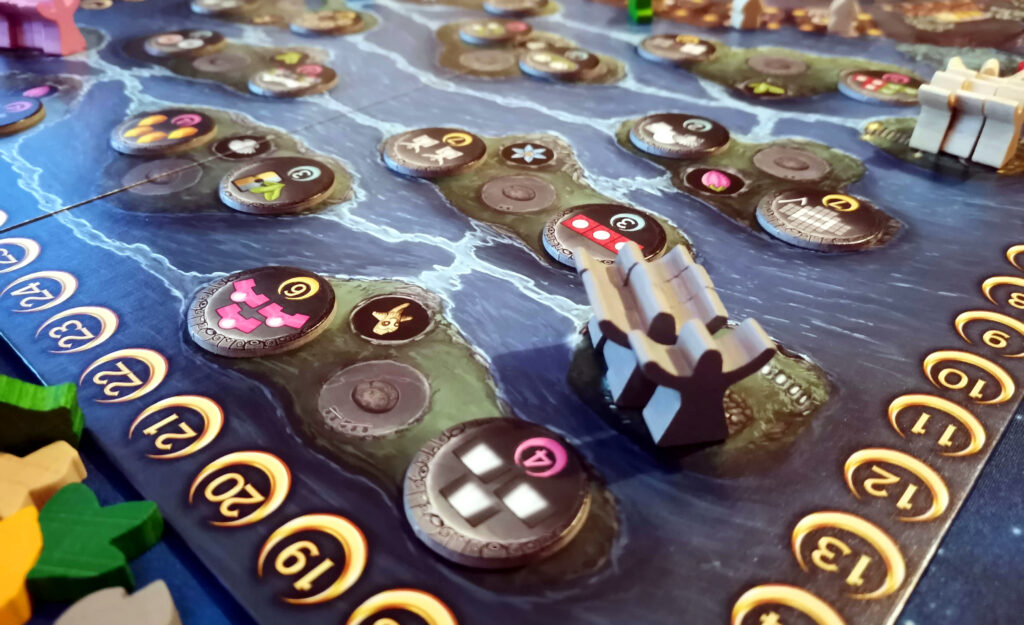
Those are the basics, and I’ve really boiled them down to the most basic descriptions of each, because there are so many variations on each action, and so many choices to make along the way. Here’s an example of what I mean,
When rotating the great bonfire to claim a portal tile, portals have to be added counter-clockwise to your player board. Each space on your board will only fit one particular portal, which are distributed around the great bonfire at random. So when it comes to rotating the bonfire, you can spend a single purple tile to rotate it one space, two for two spaces, or three for any number. If you don’t have enough purple action tiles, you can spend two of any other kind to compensate for one you’re missing. Or you could recruit a specialist card which allows you to more move spaces per tile, or maybe the specialist who lets you add the portals in any order, depending on which are available. Of course, having those purple tiles depends on how you laid the fate tiles on your board in the first place, as I mentioned above.
How Is The End Of The Game Triggered?
Around your player board, you have seven ‘novice’ gnome meeples in your colour. When you complete a retrieved task – say for example collecting four guardians – you can use an action to trigger lighting a bonfire. This flips the task tile, giving you end-game VPs, and also lets you place one of your gnomes on one of the High Council spaces on the main board. These spaces grant you a one-time bonus of your choosing, dependent on where you place them.
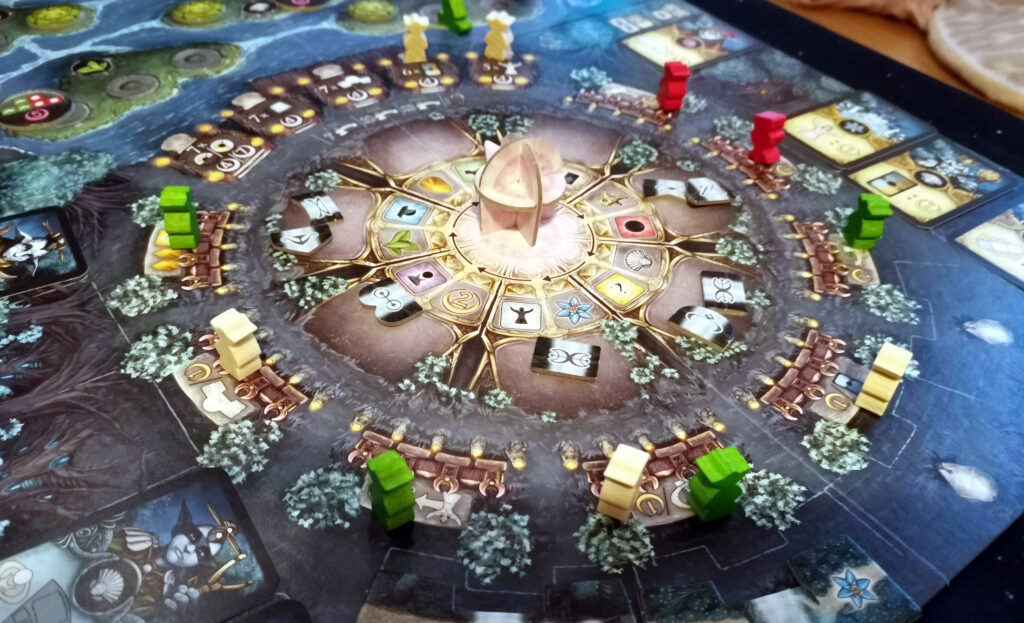
The other way to fill the high council spaces is completing one of the communal common tasks, e.g. having five guardians. When these are fulfilled, the player completing it can take the associated neutral novice and add them to the High Council. Once enough spaces in the High Council are filled, which varies depending on the player count, a countdown begins. The five countdown tiles are passed from player to player as they take their turns, meaning each player has just five turns to squeeze as many points as they can from the game.
At the end of the game, points are scored for lit bonfires, having guardians next to bonfires, having bonfires matching the colour of the path next to it, having portals, and a few other bits. Each of these though is only worth a small number of points, so the game is a real puzzle of maximising benefits and planning ahead. The person with the most points, wins.
Having Trouble Deciding What Kind Of Game This Is?
Me too! It seems to be a mix of set collection, tile placement, and movement with the ships and islands at the top of the board. It’s undoubtedly a Euro, but it really seems to be genre-less, and it makes for a really interesting change to my usual go-to of worker placement or tableau building. I think because it seems to be its own thing, it has the potential to appeal to a lot of different players.
Final Thoughts
Trying to explain how Bonfire works and plays is almost as tricky as playing the game itself. In both instances, it’s not a problem of actions being difficult – they’re actually very easy. You collect some action tiles, you spend them to do those actions. Not brain-bending stuff. But how you use those actions, that’s where the crunch comes.
The Agony Of Choice
If you like working out a plan, this is absolutely the game for you. Indecision is your worst enemy in Bonfire. You need to work backwards, taking an early look at the board, the tasks available, the starting specialists and path tiles, and then try to guess how many of action type you might need.
From there, you can start to look at your fate tiles, and decide how you might want to place them in order to get enough of each action, and even the order you take them. Your fate tiles are laid out in a stack, randomly ordered, and when you claim one you can only choose the top or bottom one.
Even when you’ve formulated your plan, now you need to start looking at the other players’ boards too. If you decide you want to get guardians next to bonfires, you’re going to need portals. These are all around the great bonfire, and the order you need to collect them varies from player to player – the player boards aren’t identical. But the portals are placed counter-clockwise, starting at the last space and working back, whereas the path tiles that the guardians will advance along, to get to your portals, and then the bonfires, are laid in the opposite order! Argh!
But this agony, this brain-melting series of choices, is where this game really shines.
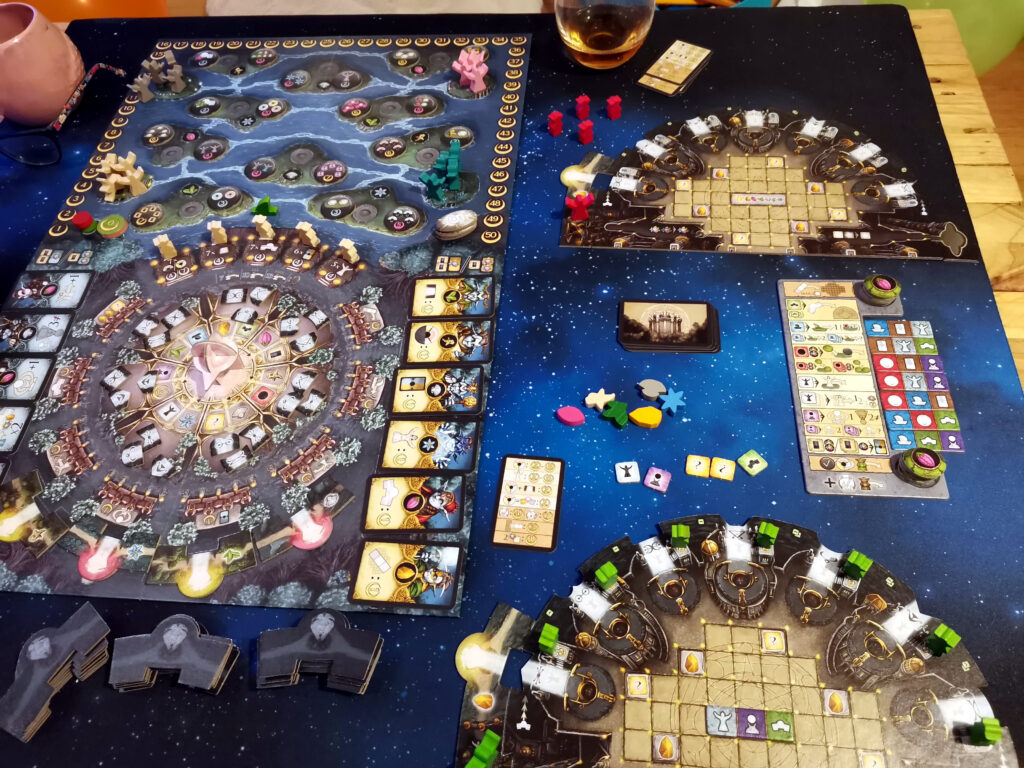
Variety Is The Spice Of Life
With so many choices available to you, and so many ways to keep the VPs trickling in, and with the random game board setup for each game, I can guarantee that no two games of Bonfire will ever go the same way. If you try to tell yourself before the game is even setup that ‘this time I’m going to grab as many specialists as I can, and complete those tricky, valuable yellow tasks‘, you’ll likely fail. Understanding how each part of the game connects to, and weaves into the next is important if you want to do well.
It’s a beautiful kaleidoscope of options, and immediately feels very Feld-like to anyone who spent a lot of time playing Castles of Burgundy. Your primary focus is on your own board, your own laying of tiles and collection of resources, but with a shared main source of ‘stuff’, and a necessity to keep one eye on what the others are doing.
If you have a group who suffer with AP (analysis paralysis), and overthinking everything, Bonfire can take a long time to play, and you might even consider setting a house rule time limit per turn. On the whole though, things balance out, as you can be doing your own nefarious scheming while others are playing their turns. It’s also a really heavy game in my opinion, so I wouldn’t recommend trying to get anyone new to the hobby to start here. It’d be enough to put them off for life, and we don’t want that.
Table For One, Sir?
There’s a really well implemented solo mode in the box. Players are pitted against an automa player named Tom (as in auTOMa…), and if you ever play solo games, you’ll be pleased to hear it’s really quick and easy to do the upkeep for. He doesn’t use action tiles, move his ship around, or any of that stuff. Tom has a small deck of cards which describe an action, so you flip the next, and do what it tells you to e.g. take the highest value task from an island with a fruit resource on it, or rotate the great bonfire to the next spot with the next portal he needs, and take it.
Tom is a tough opponent, and the key to beating him is not letting him cycle through his full deck the maximum of four times it’s possible. How you do that, I’ll let you figure out for yourselves.
Should I Buy Bonfire?
In a word, yes. But with a couple of caveats.
If you’re here, reading this, or checking out Bonfire at all, it’s unlikely you stumbled across it while you were looking at Monopoly on Amazon, so I’m going to assume you like a Euro or a Feld game. If that’s the case, and if you like games on the heavier side, I think you’ll love Bonfire. The interplay of actions, the sheer variety of choices available in how to play, the ‘market’ of the great bonfire – it’s standard Euro fare, but implemented really well.
You’ll also really enjoy that crunch when the end of the game is triggered, and you know you only have five turns left. From there you’re performing mental gymnastics to eke out every last point you can. If you really suffer from AP, or you really don’t like that sort of thing, then this probably isn’t the game for you. If, however, that sort of thing really gets you itching to get the shrinkwrap off a new game, then this is a classic example of all the good things from a Stefan Feld game, and I’m sure will be mentioned in years to come in the same breath as Castles of Burgundy and Macao.







